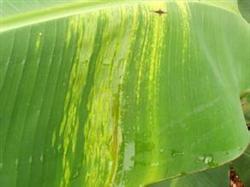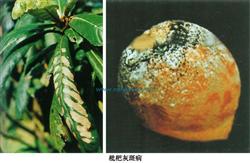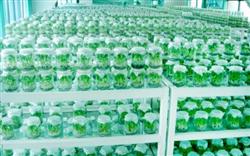Application of Plant growth regulators on Banana

The growth and development, flowering and fruiting of banana are affected by nutrients and endogenous hormones in the plant and external environmental conditions (climate, soil, management level), and are often restricted by some aspects in the process of growth and development. and affect the yield and quality of banana fruit. Generally speaking, plant growth and pseudostem size can be used as a basis to measure plant yield. The stronger and taller the plant is, the higher the yield is. But sometimes it can be seen that although the stem is not big, the ear is bigger than the thick stem. This phenomenon is related to the different status of endogenous hormones among banana plants. Although the vegetative growth of some plants is strong, the production and accumulation of endogenous hormones affecting reproductive growth are blocked, resulting in the imbalance between vegetative growth and reproductive growth, resulting in the phenomenon of tall pseudostems and small ears. It is reported that the most rapid fruit development period is generally consistent with the highest auxin content. The parthenocarpy of bananas is due to the fact that the ovary itself contains more gibberellins, which promotes the expansion and continued development of the ovary. It can be seen that the growth and development of banana is restricted not only by its own nutritional supply and external environment, but also by endogenous hormones. The experiment and production practice show that banana can also control the growth and development of banana plant and fruit by using synthetic plant growth regulators. According to foreign reports, spraying 0.01-0.4% ethephon, 0.05%-0.15% CCC, 0.0025%-0.01% naphthylacetic acid (NAA) on banana products 5 or 7 months after planting, compared with the untreated control, spraying 0.15% ethrel decreased the plant height the most, while 0.01% ethephon increased the plant height the most. The treatment with 0.01% naphthylacetic acid had the highest yield, with an increase of 6495 kg (17.9%) per hectare, and each treatment had no significant effect on fruit quality. In China, in 1976, Qin Jianqiu used 80% naphthalene acetic acid 50 g, urea 500 g and water 50 kg in Shunde, sprayed 100 ears, and sprayed banana fruits with more than 50% flesh (premature spraying, fruit finger deformation, thickening and unsmooth skin). Spray consequence refers to an increase of 2.8 cm, 1.2 cm thickening (circumference), 1.4 kg per ear, but the fruit growth period is delayed by 15 days. From 1976 to 1977, Cao Deqin of South China Agricultural University used 2mai 4murD to treat 30% and 40% fleshy fruits. The highest yield was obtained in 000l% 2mae4murd group, followed by 0.0005% group, which increased by 74.1% and 57.7% respectively compared with the control without treatment. In 1978, Ling Xinghan sprayed 0.02% 920 and 0.25% potassium dihydrogen phosphate on 60% fleshy banana fruits at Henan Horticulture Farm in Guangzhou, increasing the yield by 15%. From 1987 to 1988, Xinglong overseas Chinese Farm in Hainan Province used petroleum growth aid 802 plus Nongyuanbao (fertilizer essence) before banana budding, mixed with water to form 0.001l% solution, sprayed heart leaves and top leaves twice during banana handle formation, sprayed every comb flower after budding, until bud breaking, increased 3.1 kg per panicle and increased sugar content compared with the control. In recent years, some banana farmers in some banana areas of Zhongshan, Fanyu and Dongguan in Guangdong have successfully applied 2mai 4murD to spray fruit, which has achieved good results in increasing fruit index, improving banana fruit quality and increasing economic benefits. The specific dosage is as follows: 50% 2mae4 color D tablet 1GUGUAGUAZUAN 2 tablets, diluted with 15000 grams of water, and then mixed well with a small amount of phytotin; 98% 2% 4murine D powder 0.1g, dissolved with a small amount of alcohol, diluted with 14.8% 21.8 kg water, and then mixed well with 20 ml phytotin. It is appropriate to spray the fruit finger 2 or 4 times 10 days before the banana bud blossoms to break the bud. (the author believes that this period is the most appropriate. It is observed that the fastest elongation of fruit finger is from flowering to 10 days after bud breaking. Spray fog point should be small, spray to the degree of non-dripping. When using plant growth regulators, we should pay attention to the following points: ① should first determine the concentration, and then know how much the agent contains, and then dilute it accordingly. For the effective and safe concentration of each agent, a small area test must be carried out in advance to gain experience before it can be popularized and applied, and the growth agent sold in the market or the experience of others should also be tried first and then used. only in this way can we ensure safety. to achieve the goal of increasing production, improving quality and increasing income. It is common for some banana farmers to spray fruit comprehensively before mastering the use of these chemicals, resulting in drug damage loss, serious fruit finger yellowing and wilting, light fruit comb incorrect, fruit deformity, which is very inappropriate. ② mastering the best period of spraying requires that there is no drug harm and the effect of increasing production and improving fruit quality is required. ③ chooses good external conditions. General growth regulators only work at higher temperatures, so it is best to avoid low temperatures in winter, preferably at temperatures above 20 ℃, and after 3 p.m. on a sunny day. Finally, it should be recognized that in order to achieve high yield, high quality and high efficiency of bananas, it is mainly dependent on varieties. With adequate fertilizer and water supply and good management level, the use of growth agents is only an auxiliary technical measure.
- Prev

Integrated control of loquat gray leaf spot
Loquat gray leaf spot is also known as "wheel spot". It is the most important disease of loquat. Encroach on branches, leaves, flowers, fruits. There are two types of acute and chronic types: chronic disease spots on the leaves, initially light brown round spots, and then connected into irregular large spots, scattered small black spots. The disease of twigs is first caused by watery browns.
- Next

What are the key points of banana tissue culture seedling cultivation technology?
The test-tube seedlings usually have no diseases and insect pests, grow uniformly, and are easy to transport, which is conducive to the large-scale popularization of improved varieties. At present and in the future banana, banana powder, banana dragon tooth, even plantain widely used. But the test-tube seedling stage is tender and weak, the resistance is poor, susceptible to flower leaf heart rot and other diseases and insect pests, and easy to hurt or die seedlings when planted in bad weather.
Related
- Moge, come on! The staff of the peasant association in the producing area of cantaloupe were frightened when the crowd gathered.
- Causes and Solutions of low Fruit setting rate of Apple
- Symptoms and control measures of passion fruit virus disease
- Fruit growing lesson: how do apple orchards keep high yields?
- Can you build orchards in the mountains? What are the pros and cons?
- How to manage the coloring period of Crisson grape?
- This paper introduces the processing technology of two kinds of fig products.
- How much is a month for retired teachers in rural areas by 2020?
- How can strawberry planting increase sugar content? We should pay attention to management in many aspects.
- What are the cultivation techniques on how to improve the yield of golden fruit?

